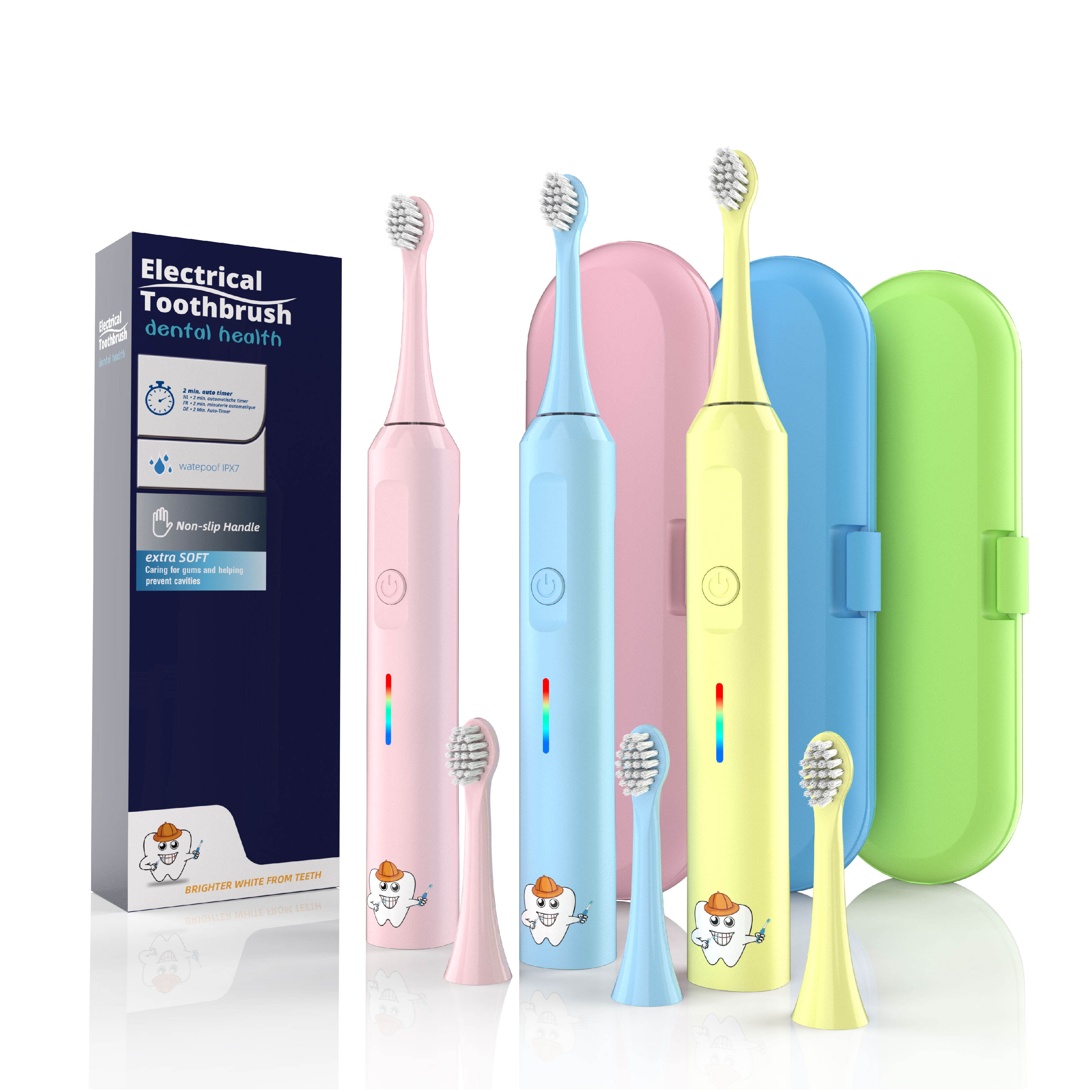Understanding Electric Toothbrushes for Children
Parents often wonder about the right age and safety considerations when introducing kids electric toothbrushes into their children's oral care routine. Electric toothbrushes can be an excellent tool for developing proper dental hygiene habits, but choosing the right one and using it correctly is essential. This comprehensive guide will explore everything parents need to know about electric toothbrushes for children, from safety considerations to benefits and best practices.

Benefits of Electric Toothbrushes for Children
Enhanced Plaque Removal and Cleaning Efficiency
Electric toothbrushes offer superior cleaning power compared to manual brushing. The automated brushing motion helps remove plaque more effectively, reaching areas that children might miss with traditional brushing. Many kids electric toothbrushes feature specially designed brush heads that are sized appropriately for smaller mouths, ensuring thorough cleaning without overwhelming young users.
Making Brushing Fun and Engaging
Modern kids electric toothbrushes often come with exciting features that transform brushing from a chore into an enjoyable activity. Built-in timers, musical tunes, and colorful designs help maintain children's interest and ensure they brush for the recommended two minutes. Some models even connect to smartphone apps that track brushing habits and reward consistent oral care.
Developing Proper Brushing Habits
The consistent motion of electric toothbrushes helps children develop proper brushing techniques. The automated movement takes the guesswork out of brushing methods, allowing children to focus on reaching all areas of their mouth systematically. This can lead to better oral hygiene habits that last a lifetime.
Age-Appropriate Selection Guidelines
Toddlers and Preschoolers
For children ages 3-5, look for kids electric toothbrushes with extra-soft bristles and small brush heads. These models should have simple controls and rubber grips for easy handling. Supervision is essential at this age, and parents should help guide the brushing process while teaching proper technique.
School-Age Children
Children aged 6-12 can typically handle more advanced electric toothbrush features. Look for models with multiple brushing modes, pressure sensors, and interactive elements that encourage independence while maintaining safety. Many brands offer age-specific models designed to accommodate growing mouths and developing motor skills.
Safety Features and Considerations
Essential Safety Elements
When selecting kids electric toothbrushes, prioritize models with built-in safety features. Look for pressure sensors that prevent aggressive brushing, waterproof construction for safe handling, and durable materials that withstand daily use. The brush heads should be securely attached and easy to replace when needed.
Proper Maintenance and Hygiene
Regular cleaning and maintenance of electric toothbrushes are crucial for safety and effectiveness. Teach children to rinse their brush heads thoroughly after each use, store the toothbrush upright to allow proper drying, and replace brush heads every three months or sooner if bristles show wear.
Teaching Proper Electric Toothbrush Technique
Starting with Basic Instructions
Begin by demonstrating the correct way to hold and move kids electric toothbrushes. Show children how to divide their mouth into sections and spend equal time on each area. Emphasize gentle pressure and proper positioning of the brush head against the teeth and gums.
Developing a Routine
Establish a consistent brushing routine that includes morning and evening sessions. Use the built-in timer features to ensure adequate brushing duration, and create a checklist or chart to track daily brushing progress. Regular positive reinforcement helps maintain good habits.
Common Mistakes to Avoid
Improper Brush Selection
Avoid choosing kids electric toothbrushes based solely on attractive designs or popular characters. Focus on age-appropriate features, size, and safety considerations. Consider your child's manual dexterity and comfort level with electronic devices when making a selection.
Inadequate Supervision
Don't assume children can handle electric toothbrushes independently right away. Maintain appropriate supervision based on age and ability, gradually allowing more independence as proper technique is demonstrated consistently.
Frequently Asked Questions
At what age can children start using electric toothbrushes?
Most dental professionals agree that children can start using kids electric toothbrushes around age three, provided they are supervised and using an age-appropriate model. However, each child's readiness should be assessed individually based on their motor skills and maturity level.
How often should brush heads be replaced?
Brush heads should be replaced every three months or sooner if the bristles show signs of wear, fraying, or discoloration. Regular replacement ensures optimal cleaning effectiveness and maintains proper hygiene.
Are electric toothbrushes safe for children with braces?
Yes, electric toothbrushes can be particularly beneficial for children with braces. Many manufacturers offer specialized brush heads designed specifically for orthodontic care. However, consult with your orthodontist for specific recommendations and proper cleaning techniques.


